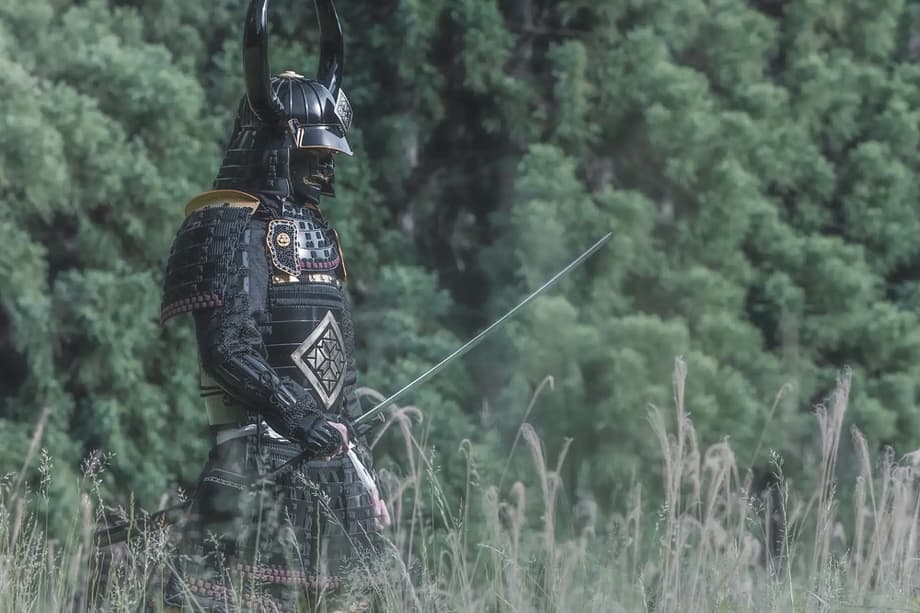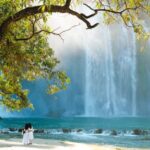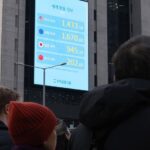A cinematic samurai adventure in Arashiyama
Kyoto now offers a new way to step into the world of samurai, not as a spectator, but as the star of an action scene. Shogun Studio Japan has launched a Samurai Battle Movie Experience in Arashiyama that outfits guests in armor, stages photogenic scenes at famous Kyoto spots, and then moves to a secluded mountain set to choreograph a dramatic fight. The result is both a gallery of still photos and a short movie cut by professionals, complete with sweeping drone shots for an authentic, cinematic look.
- A cinematic samurai adventure in Arashiyama
- What is included and how it works
- Is it safe, and what weapons are used
- Why Kyoto is the perfect backdrop
- Samurai tourism is booming
- How it compares with other experiences
- Who is it for, and how to prepare
- Booking and practical details
- Tips for a great shoot
- What to Know
The format is designed for small groups and flexible enough for couples or friends traveling together. Up to six participants can join a session, and studio staff can play the role of opponents or allies to match the group size and the story you want to tell. The entire outing takes about two hours across two locations, balancing photo time in Arashiyama with a guided action segment on the mountain stage.
What is included and how it works
The experience is structured as a two part production. First, you gear up at the studio and capture still images at signature Kyoto backdrops. Then you head to a private outdoor set where instructors teach the basics of stage combat and help you block a safe, exciting sequence with swords, spears, and bows.
Stage one: Arashiyama photo shoot
After choosing armor, the team fits each participant and checks mobility for the action segment later. Guests pick from three Arashiyama locations that each deliver a different mood. The Togetsukyo Bridge offers river vistas and the mountain ridge framed behind you, a classic Kyoto postcard brought to life. The bamboo grove brings vertical lines and soft light that flatter armor and movement. A traditional teahouse provides an indoor setting with tatami, cedar beams, and the warm color of wood in contrast to lacquered plates and cords, and matcha can be served during the shoot to round out the cultural moment.
Photographers stage poses that highlight armor details and silhouette. Expect direction on stances and blade handling for stills, so the images look natural and grounded in period style. This is also where groups can refine the look of their story, from a stoic retainer to a roaming ronin or lord with retainers. These choices carry into the next stage, where the movement tells the rest of the tale.
Stage two: mountain battlefield
The action segment unfolds at a secluded mountain venue away from crowds. Staff deliver a safety briefing before any movement begins, explaining how to hold weapons, maintain spacing, and hit marks without contact. Participants then rehearse a sequence that blends simple footwork with visually strong moves, such as parries, sweeping cuts, spear thrusts, or archery poses. The team films coverage from multiple angles, including aerial footage captured by a drone, to add scale and motion to the final cut.
The studio can tailor the scene to your group size. Solo travelers can face off against a studio actor. Pairs can duel or team up. Larger groups can arrange a short battle where roles are distributed among heroes, rivals, and supporting allies. The deliverables include still photos and a professionally edited short movie of around two to three minutes that brings the story together with tight pacing.
Is it safe, and what weapons are used
Tourist sword activities in Japan operate under strict rules. Real sharpened blades are not used in entertainment programs for visitors. Japanese police guidance confirms that letting tourists handle real, registered katana for temporary activities violates the Firearm and Sword Control Law. Providers build their offerings around safe equipment and training methods, so participants can enjoy the feel of a period action scene without risk.
At Shogun Studio Japan, the team uses stage props and training weapons. The session begins with a safety talk that covers spacing, timing, and cues. The choreography focuses on camera angles and visual beats rather than contact, which keeps the action safe while still looking convincing on screen. Groups are capped at a manageable number, and studio staff stay in character while also quietly managing timing, eyelines, and movement paths behind the scenes.
Other programs in Kyoto set similar expectations. Samurai lessons at temple grounds and movie studio parks teach participants how to bow, draw and sheathe, and deliver basic cuts, then film a short scene under instructor supervision. Many of these experiences have fallback plans when weather turns, moving indoors and adjusting staging to keep guests comfortable.
Why Kyoto is the perfect backdrop
Arashiyama blends nature and architecture in ways that suit period drama. The river below Togetsukyo presents a broad stage punctuated by seasonal color on the hills. The bamboo paths filter daylight and simplify the frame with strong verticals. Teahouses add polished wood and tatami texture, which reads beautifully on camera. This variety lets small productions change mood quickly without long travel or complicated logistics.
Kyoto’s legacy as a center of historical filmmaking also plays a role. The city is home to long running period drama sets and crews that know the craft of jidaigeki, the Japanese term for films and shows set in historical eras. Film festivals in Kyoto showcase the genre and keep interest steady among local and visiting audiences. Recent successes, from intimate features to time travel comedies, show how flexible the genre can be, mixing humor, drama, and precise swordplay with contemporary storytelling techniques.
Samurai tourism is booming
Interest in samurai culture has climbed alongside the global reach of streaming series and films that spotlight swords, armor, and courtly drama. Viewers who discover the aesthetics on screen often want to try a practical version of it while traveling. That demand has encouraged a variety of experiences across Japan, from museum programs that let you wear armor and throw shuriken to guided sword technique workshops that culminate in a filmed fight scene.
Kyoto remains a centerpiece of this trend, because it pairs deep cultural history with easy access to photogenic landmarks. Families can spend a morning learning katana basics on a period set, then shift to castle grounds or tea ceremony in the afternoon. Travelers who want more context can visit museums dedicated to samurai and ninja, where authentic swords and armor are preserved and explained by guides. Many venues offer both education and action so visitors leave with a deeper sense of the era and a memory card full of images.
New shows also keep attention on Kyoto. Recent productions set scenes in and around the city, reinforcing its status as a natural stage for stories of warriors and courtiers. That visibility helps experiences like the Samurai Battle Movie program resonate with visitors who want to align their trip with recognizable locations and styles.
How it compares with other experiences
Kyoto’s menu of sword and armor activities covers a spectrum, and each option offers a distinct flavor. At temple grounds such as Myokaku ji, guests dress in kimono, learn sword grips and striking lines from actors who perform in period dramas, and then film a short performance. The session is compact, usually a little over an hour, geared to small groups for focused attention. It ends with a set of photos and a video file download that captures the moves learned in training.
At Kyoto’s long standing movie studio park, visitors step into streets that recreate an Edo period town, choose from roles like samurai or ninja, and learn a sequence under guidance. The program is designed for quick immersion on a controlled set, lasts around an hour and a half, and has offered time slots throughout the day. A photo walk on the atmospheric streets helps guests complete the arc from training to performance, with a filmed fight at the end.
Shogun Studio Japan’s new package stands apart by combining real Kyoto landmarks with a private outdoor battlefield and airborne camera work. The first half builds a photobook with icons such as Togetsukyo, the bamboo grove, or a teahouse, then the second half switches to an action sequence shaped for the camera. The crew can play characters in your story, which benefits pairs and small groups who want a larger scale skirmish on screen. The deliverables, a set of stills and a short film cut to feel like a trailer, give participants two kinds of keepsakes.
Who is it for, and how to prepare
This program suits friends on a city break, content creators seeking a fresh angle in Kyoto, couples marking a special trip, or families with older children who enjoy active play. Expect light movement and the need to take direction, including hitting marks and repeating actions for the camera. The armor adds weight and reduces mobility, so comfortable base layers and closed shoes will help. If you prefer not to run or roll, the crew will tailor a scene that leans on posing, evasion steps, and dramatic reveals rather than fast footwork.
Weather can change quickly in the hills. Bring water, consider a small towel in summer months, and discuss shade or timing with the crew if heat is a concern. In cooler seasons, a thin layer under the armor helps keep warmth without bulk. If you wear glasses or contact lenses, mention it at fitting so helmets and masks can be adjusted for comfort. Groups can assign roles in advance, which makes the choreography phase smoother and gives each person a moment to shine.
Booking and practical details
The studio is based in the Arashiyama area of Kyoto, a district known for its river, bridges, temples, and bamboo paths. Sessions run across two locations, the photo segment in Arashiyama and the action segment at a private mountain site. Availability, options for locations, and seasonal adjustments are managed by the studio, and group leaders can confirm preferences at the time of booking. Arrival times and meeting points are provided in the confirmation, with staff guiding the day from armor fitting to the final wrap.
Reservations are handled through the official site. Prospective participants can check schedules, select preferred scenery, and ask questions before paying. For current availability and booking, visit the Shogun Studio Japan website. Pricing, weather policies, language support, and any age or health restrictions are listed by the provider and may vary by season.
Tips for a great shoot
The best short films keep the story simple, the movement clear, and the framing strong. Armor and props already carry style and history, so a clean concept usually reads better on camera than a plot with many turns. Aim for clarity and rhythm, then trust the editors to shape the final cut.
- Pick a clear theme, such as a duel at dawn, a lord and retainer guarding a teahouse, or allies uniting on the bridge.
- Choose locations to match the mood. The river gives scale, the bamboo grove gives symmetry, the teahouse gives intimacy.
- Coordinate colors if you book as a group. Matching cords or complementary armor pieces stand out in photos.
- Use the environment. Walk along the bridge for a moving opener, frame close ups in bamboo shade, then finish with a wide drone reveal.
- Listen for cues. Film crews rely on precise timing, so hold poses until you hear cut and reset with the same energy.
- Ask about variations. A slow motion spin, a staged arrow release, or a synchronized draw can elevate the final edit.
- Respect the sites. Follow staff guidance around popular landmarks and keep armor and props clear of fragile surfaces.
What to Know
- Shogun Studio Japan runs a two hour Samurai Battle Movie Experience in Kyoto’s Arashiyama district.
- Participants wear armor for still photos at spots like Togetsukyo Bridge, the bamboo grove, or a teahouse with matcha.
- The action segment takes place on a private mountain set with safe stage weapons and a detailed safety briefing.
- Groups of up to six can join, with studio staff acting as opponents or allies to complete the scene.
- Deliverables include still photos and a professionally edited short film of about two to three minutes with drone footage.
- Japanese law restricts use of real sharpened swords for tourist activities, so programs use stage props and training equipment.
- Kyoto offers several samurai style activities, including temple based lessons and movie studio park sessions for comparison.
- Book sessions and check availability on the official Shogun Studio Japan site.




